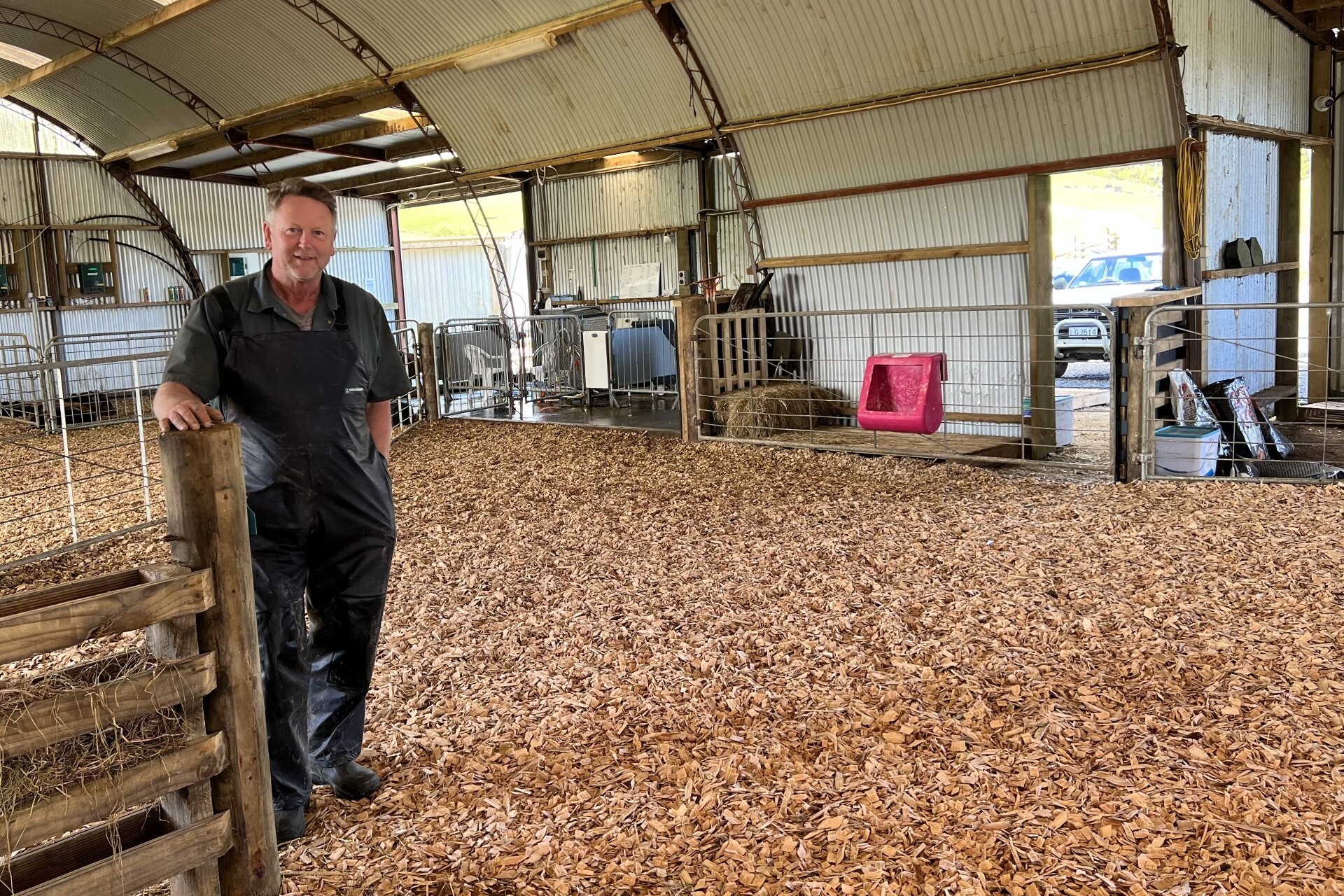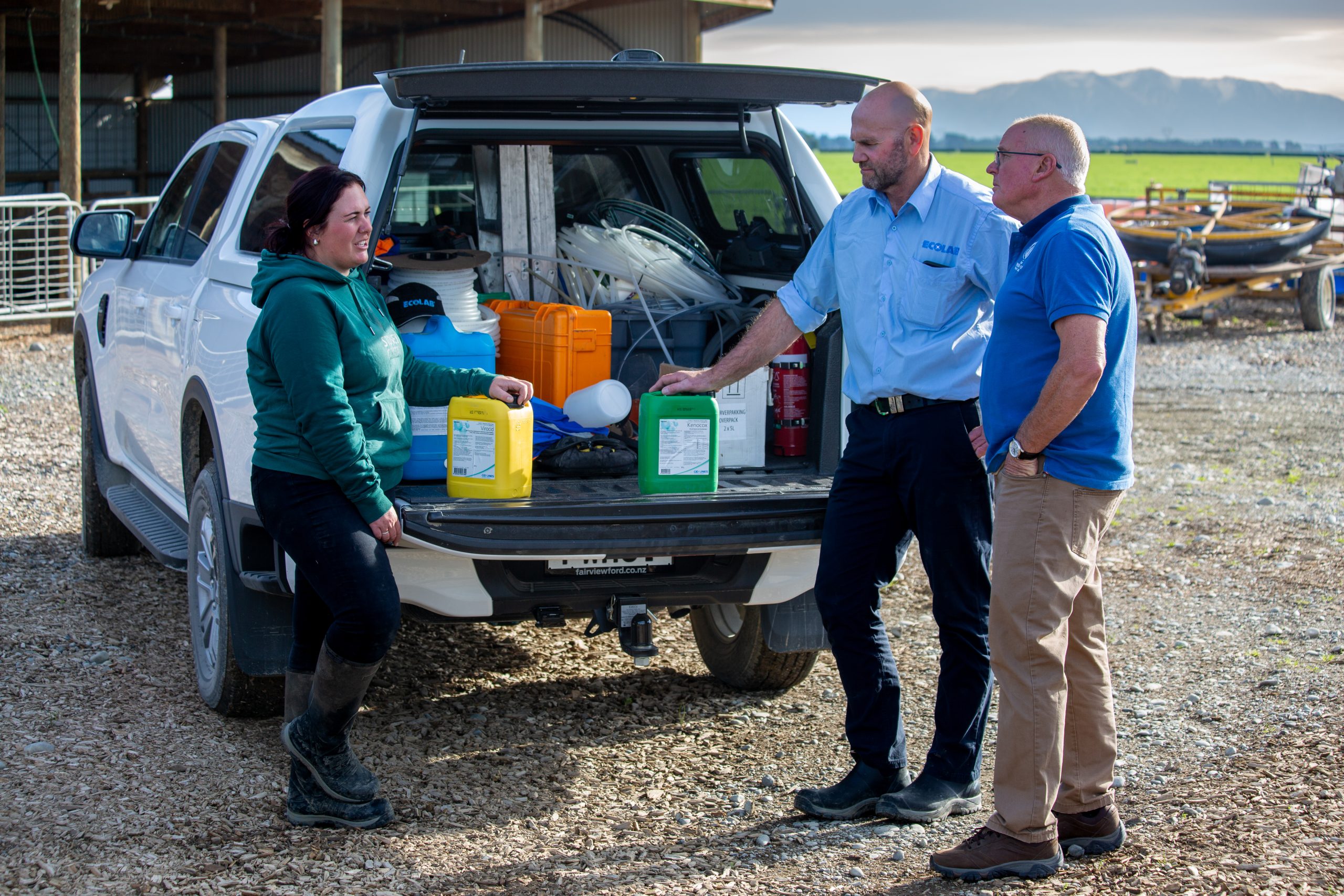Following the Government’s Winter Grazing Taskforce report, extra care needs to be taken this spring to make sure cows aren’t calving in mud.
Of course, the easiest way to do this is to make sure none of your cows are standing in any mud during winter and early spring but it’s far easier said than done.
And although there may be dry areas in the paddock, cows like to go off by themselves to calve and, if all of the dry spaces are taken up by lounging cows, they may choose the wet corner instead.
The best thing to do is to separate calving cows from the rest of the herd so you can give them the best treatment.
So how do you know if a cow is about to calve?
The easiest way is through a 12-week pregnancy scan. This scan not only shows empties but gives the approximate date of birth for the calf.
However, January is long gone and you can’t go back in time so if the scan wasn’t done book it in for next year and start looking at your AI records.
The last AI date for the cow should be accurate enough to predict the calving date although some cows will have held to an earlier insemination or have slipped that foetus and ended up getting it on with the bull in the paddock late summer.
And if your tags and records aren’t great then none of it will be much help.
It’s now up to the cows to tell you.
Up to a month before calving, udders will become swollen and the milk vein under the cow’s belly will show.
Milk can drip from teats and there can be a mucus string from the vulva.
Closer to calving, look for cows that are keeping by themselves and are not interested in eating.
Their vulvas will now look swollen and flabby and there will be a dip between the tail head and the pin bones.
They will not look happy and will be restless, their tails swishing from side to side.
Their backs will be arched and they will be kicking and nosing their sides.
When things are getting really close the water bag will be protruding.
With heifers, all of these signs can be seen a day or so before calving: with cows it can be only hours or minutes, so checking cows and heifers regularly and several times a day is important.
Cows and heifers on fodder beet will bag up closer to calving and show fewer signs, so keep an extra-close eye on them.
Move cows and heifers about to calve, quietly and carefully, to a dry calving area (no running them down the lane).
The best setup I’ve seen recently is a bed of deep wood shavings under the farm’s former covered sheep yards, with a self-feed silage stack.
Calves, once they are born, are walked up the ramp to the old sheep pens that were converted into calf pens.
Whatever you choose, make sure it is as weather proofed as possible, and dry. If you don’t want to be there in the middle of the night checking your cows, then they probably don’t want to be there either.
And a good calving area will help prevent down cows.
Down cows – cows that won’t get up again after calving – are probably one of the most frustrating aspects of dairy farming.
Right when you are busy trying to get new calves to suck, milking colostrum cows, keeping the feed up to milkers, and still checking the drys, a down cow takes up time you just don’t have.
The best cure is always prevention.
There can be multiple reasons for down cows, but at least fix the easy ones. Having cows calve where they are not going to slip over is a no brainer.
If a cow slips during calving she will fall and hurt her legs and back and won’t want to get up again.
Or if she’s afraid of slipping over she will sit down and do the whole hour- or two-hour-long process on the ground.
If the ground is wet and cold she will get wet and cold and her legs may get too cold for her to stand up again after calving.
The other reasons are usually to do with metabolics.
There is a lot going on in the body of your supreme athlete of an animal – she is giving birth, producing a lot of milk from day one, and will have to get her reproductive system recovered so you can get her back in calf in a couple of months’ time.
Her body is sore from calving, and the hormones she’s produced to loosen the pelvic ligaments have affected all of her tendons so she’s a bit wobbly and her feet are sore.
As well, you upped her feed intake from about 10kg DM/day to 18kg DM/day and probably changed her diet as well from fodder beet, kale, or swedes to fresh grass, which means her rumen has to adjust.
On top of all that you’ve taken away her best buddies who are yet to calve, put her with the stroppy heifers who still don’t know how to walk onto the rotary platform, and the weather has turned nasty.
No wonder she’s not happy.
Her body is trying to produce milk, which is made up of calcium and magnesium. If you don’t give her these minerals she’s going to start taking them from her own body that needs them too.
Magnesium dusting of feed should start about a month before calving, and think about adding trace minerals as well.
Chromium, cobalt, copper, iodine, selenium, and zinc are all involved in the metabolic pathways that help boost the immune system.
Vitamin D (the sunshine vitamin) is needed to activate calcium in the bloodstream, and vitamins A and E help with the immune system as well.
Some of these minerals and vitamins can be stored in the cow’s body and others need to be given daily.
As well, some winter feeds are deficient in them so extra supplementation is needed.
Talk to your vet or field rep about what will work the best for your system.





